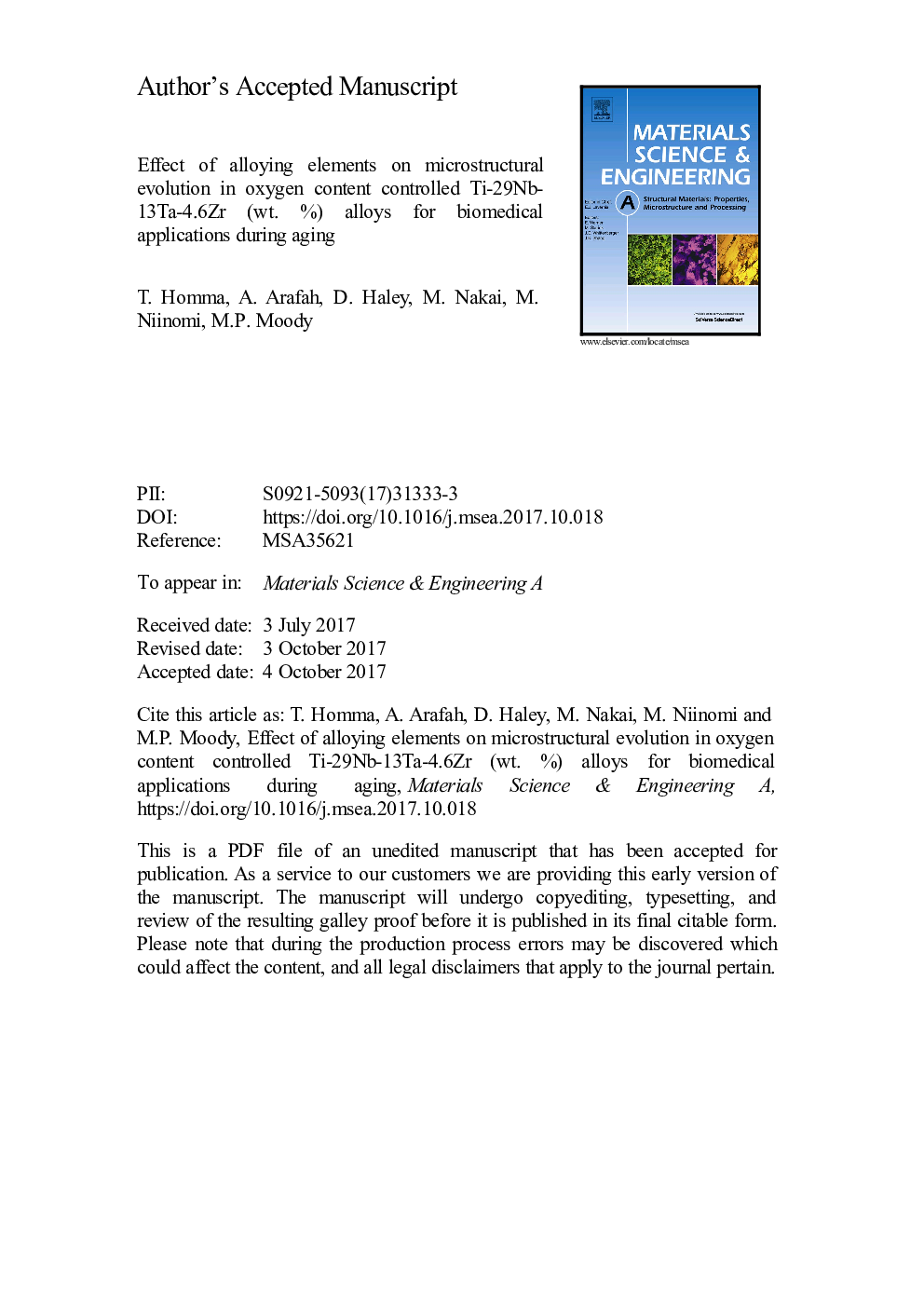| Article ID | Journal | Published Year | Pages | File Type |
|---|---|---|---|---|
| 7974658 | Materials Science and Engineering: A | 2018 | 36 Pages |
Abstract
The effects of alloying elements in Ti-29Nb-13Ta-4.6Zr (wt%) (TNTZ) alloys with low Young's modulus for biomedical applications on microstructural evolution during aging, in particular, at an aging temperature of 400 °C have been determined. The peak hardness is obtained by co-precipitation of α and Ï phases. O addition stabilizes Ï phases; as a result, formation of Ï is enhanced with increasing the O content as an alloying element, resulting in prevention of the growth of the α phases due to soft impingement. Because of the stress caused by the Ï to α transformation, the α phase often contains defects within its internal structure. Although Zr is known to be a neutral element within Ti, here we show that Zr acts as weak β stabilizer. At the β/α interface, Zr enrichment appears to be due to a solute drag mechanism. In addition, a slight increase in Zr composition in the β/Ï interface has also been detected using atom probe. Dispersion of Ï phases and segregation of Zr to the β/α interface lead to fine α phase precipitation, resulting in an increase in the hardness of the O-added TNTZ alloys.
Related Topics
Physical Sciences and Engineering
Materials Science
Materials Science (General)
Authors
T. Homma, A. Arafah, D. Haley, M. Nakai, M. Niinomi, M.P. Moody,
